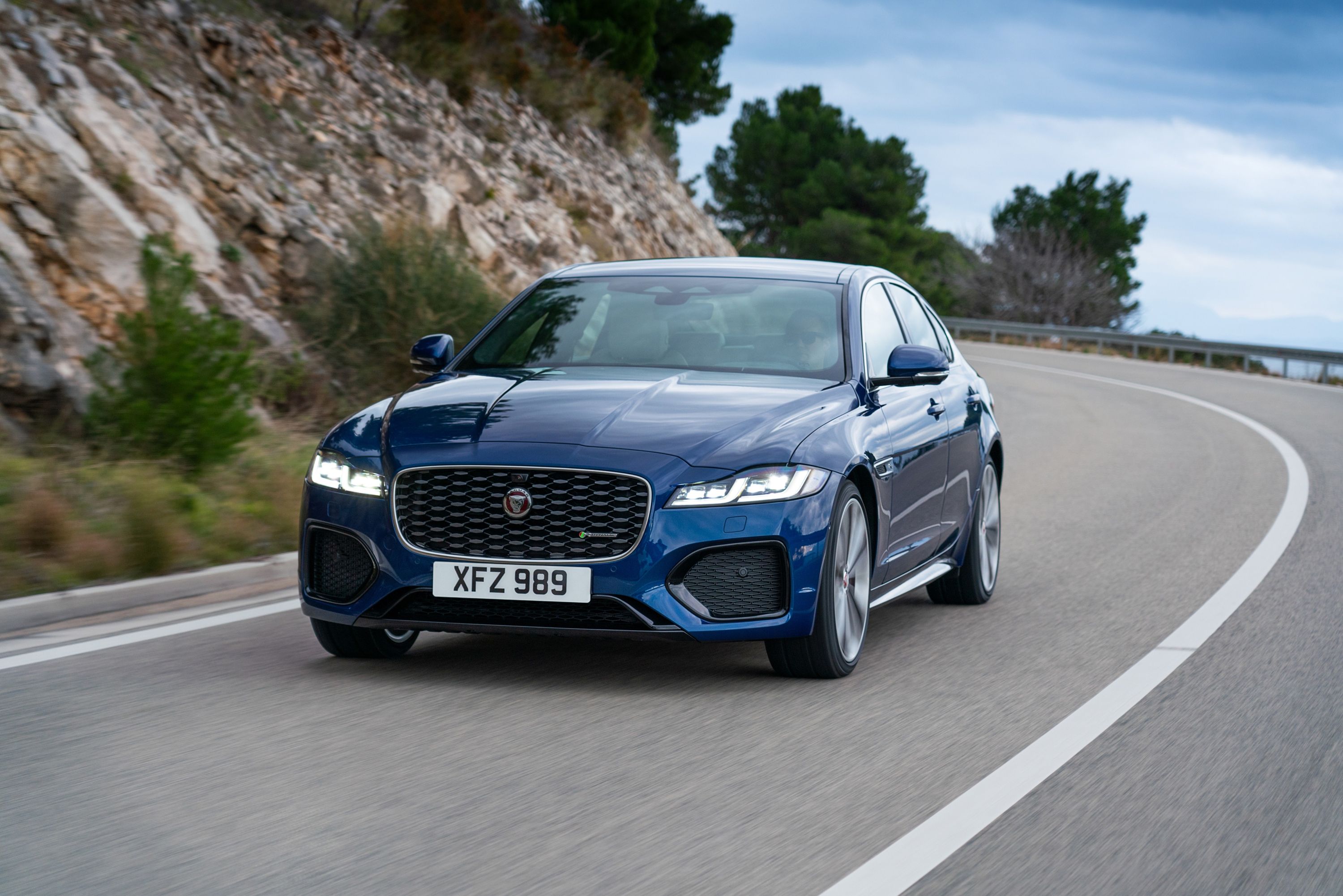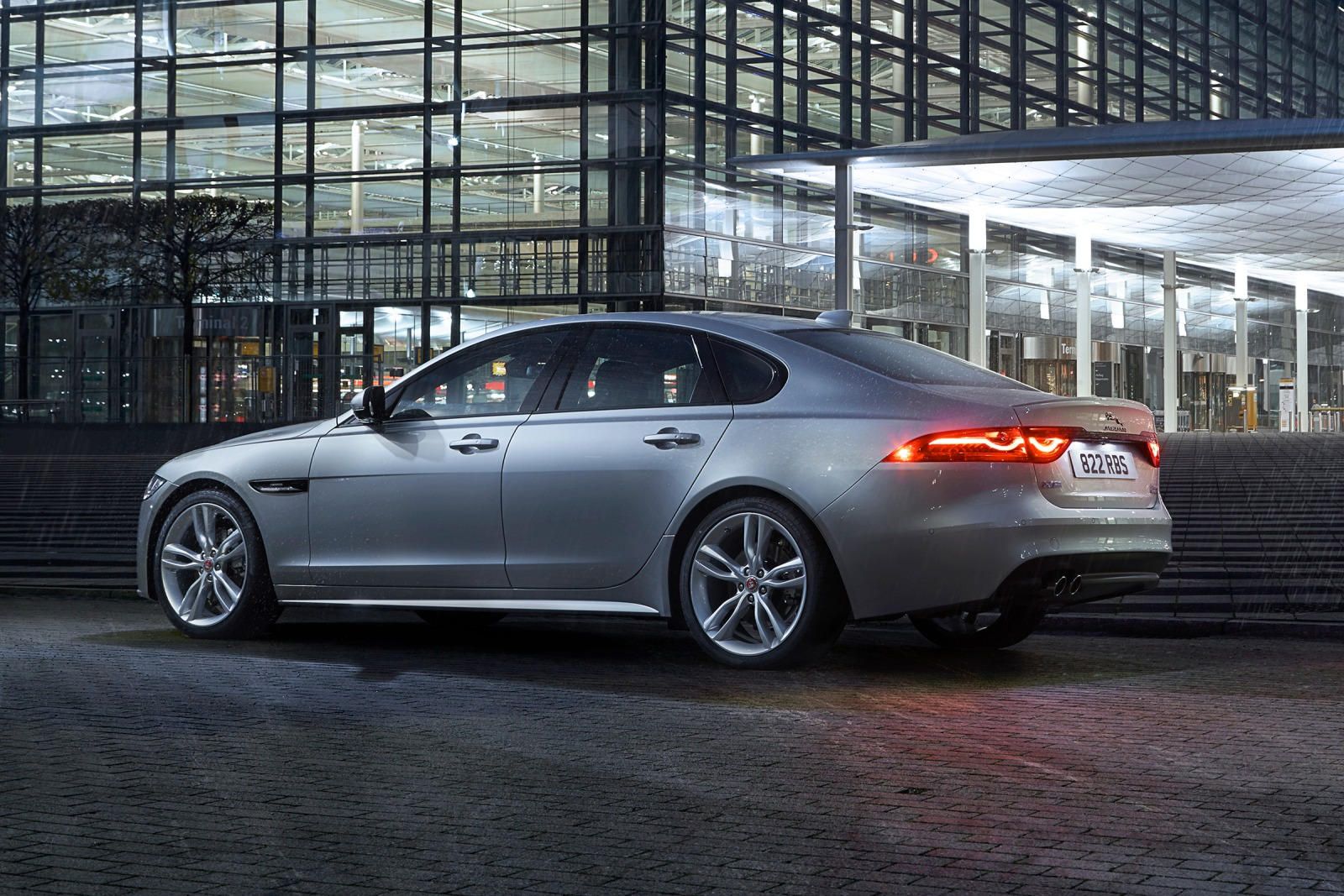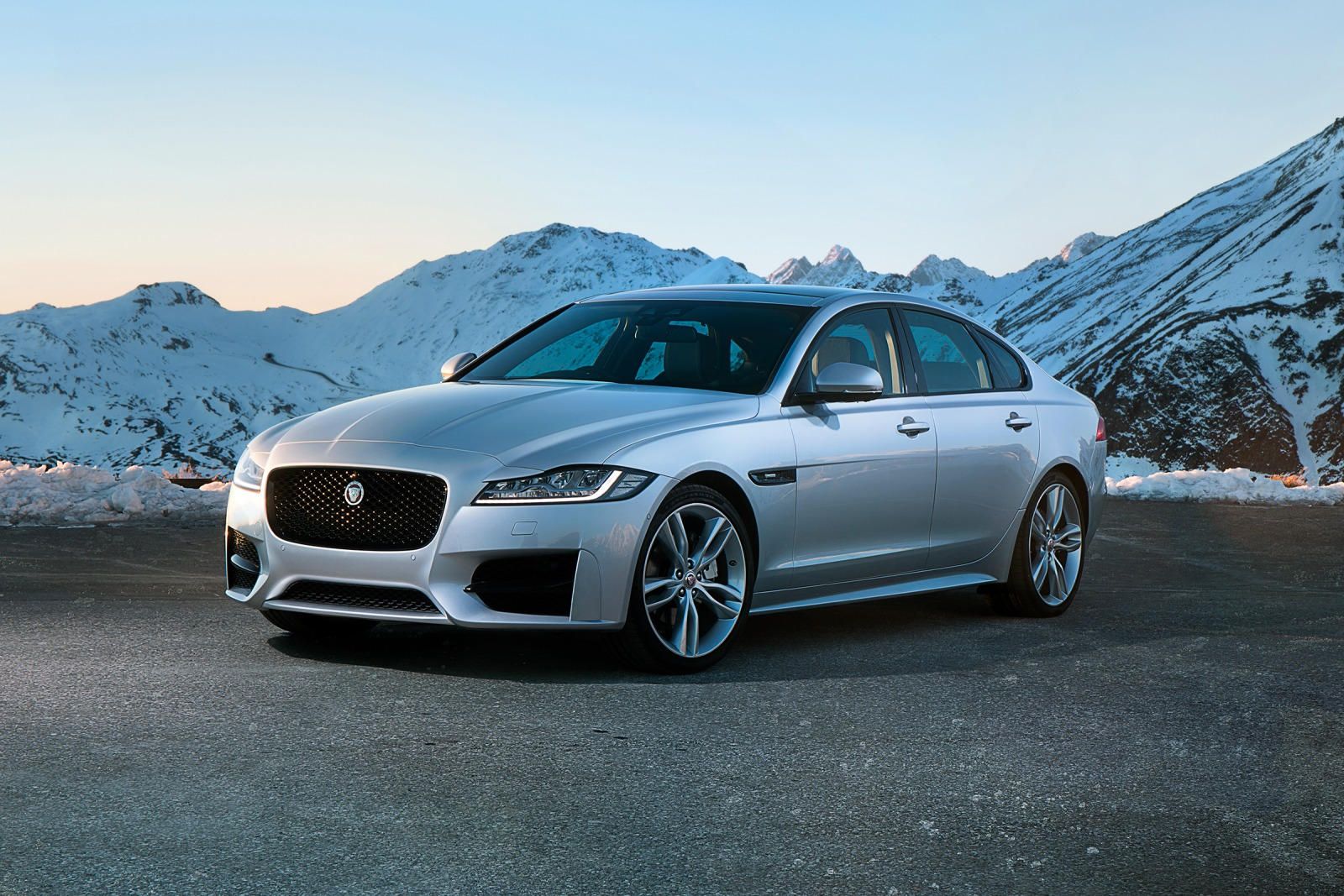Everything you need to know
It won't be Jaguar's best seller, but that hasn't stopped the Jaguar XF being one of the best cars ever made by the British car maker.
Looking back, the original Jaguar XF stands out as one of the most important vehicles made by the executive auto maker in recent times. For sure, the F-Type sports car's arguably more exciting, and the new F-Pace SUV's bound to be a far bigger sales hit, but the rejuvenation that Jaguar's currently experiencing can be traced back to the launch of the original Jaguar XF roughly a decade ago. So, big boots to fill for the new second-generation Jaguar XF, then. Thankfully, the svelte executive sedan manages to build upon everything its predecessor did well, whilst also addressing many of the aspects that held the original back from greatness. Even though we do concede the Jaguar XF isn't quite up to the task of legitimately toppling the segment best.
Worth every penny. Not quite top of the class, though
No surprises, then, that Jaguar's done an equally good job with the current XF's cabin – and, indeed, substantially improved upon in certain areas.
One of the more unexpected highlights of the original Jaguar XF was its interior. Though rear room was on the more restricted side for an executive sedan and overall build quality not quite up to the standards set by brands like Mercedes-Benz and Audi, the first-generation Jaguar XF was certainly worthy of plenty of praise. No surprises, then, that Jaguar's done an equally good job with the current XF's cabin – and, indeed, substantially improved upon in certain areas. For example, overall head and leg room is now much better this time around (the only major qualm involves the middle seat in the rear row: it's a bit on the narrow side, and the broad transmission tunnel means there isn't much room for passengers to place their feet). Other than that, there's little to find fault with the Jaguar XF practicality-wise. Trunk space is also very generous by class standards, with the 19 cubic feet capacity being substantially more than what other vehicles in this segment offer (for reference, the Mercedes-Benz E-Class and Audi A6 offer just 12.9 and 14.1 cubic feet respectively). Granted, the trunk opening is a bit narrow by class standards, and it's a shame that the rear seat backs don't fold down completely flat if you need to lug about larger items, but the low load lip does go some way to reclaiming some of that lost ground.
The rest of the Jaguar XF's main controls are intuitive and easy to operate on the move.
Perhaps the only major fly in the Jaguar XF's ointment is the build quality – or, to be more specific, the gulf in the quality of the materials used throughout the cabin. Though the overall fit and finish is to a very good standard, with a pleasant solidity throughout and lots of high quality plastics and leathers on the main contact points, it's pretty evident that some cost cutting measures have been made. For example, the plastics used on the transmission tunnel and the door pockets don't feel quite to the quality we'd expect from a vehicle with a starting price of just over $48,000, and there isn't even any headlining to cover up the metal that forms the roof of the trunk. On a more separate note, we'd also have preferred the touch screen infotainment system to be a little bit faster and more responsive: we appreciate the leap in quality over what was offered on the old Jaguar XF, but the likes of BMW's iDrive and Audi's MMI setups still lead the charge in this class. Other than that, the rest of the Jaguar XF's main controls are intuitive and easy to operate on the move – though, if we're being picky, having to wait for the gear lever to rise up from the transmission tunnel before you can select forward or reverse does get a tad annoying once the novelty has worn off.
The next BMW 5 Series needs to be pretty special in order to beat the Jaguar XF
But there's no denying the Jaguar XF is at this particular moment in time the sportiest executive sedan you can buy right now.
For years, the BMW 5 Series has been the go-to car for executive sedan buyers who want a vehicle that strikes the best-judged balance between comfort, refinement and handling dynamics. For sure, other vehicles may have fared better in the comfort stakes, but little else in this class could genuinely threaten the Beemer in the driving thrills stakes. That is, until the new Jaguar XF came onto the market. Admittedly, the 5 Series may reclaim its throne when the new version goes on sale sometime in 2017, but there's no denying the Jaguar XF is at this particular moment in time the sportiest executive sedan you can buy right now. Overall body control, for example, is exceptionally well controlled, with body lean only being brazenly obvious when you're pushing towards the vehicle's limits (as in "limits that'll result in a speeding fine if you're not approaching them on a track day"), and that same suspension setup which keeps the Jaguar XF level during braking and cornering also results in an impressively comfortable ride. So much so, in fact, that we feel it isn't worth spending $1,000 on the adaptive suspension setup that's available on higher spec Jaguar XF models, as the standard setup does such a top job already.
If there's one area we won't lavish on the Jaguar XF with praise, it's the rearward visibility.
If we're being picky, we'll concede the Jaguar XF doesn't quite smooth out the lumps and bumps in the road as well as, say, a Volvo S90 does. But we'll happily take that merest of penalties when the trade-off is a large executive sedan with the poise, response and balance of a touring-oriented sports car. If there's one area we won't lavish on the Jaguar XF with praise, it's the rearward visibility. Courtesy of the chunky rear pillars and narrow rear window, it's not terribly easy to clearly observe what's behind you. The fact features like reversing cameras and blind spot monitoring aren't available as standard across the range further exacerbates this issue, and somewhat spoils an otherwise well sorted car. Another unhonourable mention is the rearward visibility, visibility overall refinement levels. Though the Jaguar doesn't have a loud and boomy cabin, it is worth pointing out that a fair amount of tire roar permeates through the interior. At least wind noise is fairly well suppressed and, as we'll discuss in more detail in a moment, overall engine noise isn't much of an issue either.. ad.
Unless you want loads of grunt, the 2.0-liter diesel should do you fine
The 2.0-liter diesel's economy is also very competitive with comparable rivals.
Considering the sportier aspects of the Jaguar XF that we've already mentioned, it's perhaps unsurprising to know that a range of appropriately punchy engines are also available in the range. However, they're not the ones we'd immediately suggest to most buyers: instead, the sole 2.0-liter diesel option is one we reckon will suit a majority of Jaguar XF owners to a tee. Of course, with 'only' 180-hp on tap, this option was never going to be the one for performance car enthusiasts. There are, though, some handy attributes of this four-cylinder diesel, with the 318 lb-ft of torque that's available at a decent spread of the lower rev band endowing the Jaguar XF with a decent amount of acceleration. It's also worth pointing out that the engine's surprisingly refined for a diesel: for sure, a bit grumbly and noisy at times (mainly if you work the engine hard), but nothing too obtrusive by class standards. It's the claimed fuel economy levels, though, which set the 2.0-liter diesel apart from the other engines in the Jaguar XF range. Even the least efficient, all-wheel drive version can return 30mpg in the city and 40mpg on the highway, with the more frugal rear-wheel drive alternative improving on those stats by one and two miles-per-gallon respectively. On top of being far superior to what the gasoline options can muster, the 2.0-liter diesel's economy is also very competitive with comparable rivals. The BMW 5 Series diesel, for instance, can only at best return 26mpg in the city and 38mpg on the highway (though it is worth pointing out that the BMW is nearly 70-hp more powerful than the diesel Jaguar XF).
Regardless of which engine you do end up going for, you'll only have access to an eight-speed automatic transmission.
As a result, unless you need the extra grunt of the gasoline engines, then the diesel should do you just fine. Then again, the alternative units do offer plenty more go than the oil burner, with the base tune of the 3.0-liter supercharged six-cylinder engine pumping out no less than 340-hp and 332 lb-ft of torque. Needless to say, it's a pokey engine that certainly suits those sporty handling characteristics we mentioned earlier, and even more so if you boost the power and torque by 40-hp and 7 lb-ft by going for the flagship 'S' specification. Plus, being a six-cylinder gasoline engine, the 3.0-liter unit is beautifully smooth and refined, with a pleasantly linear delivery of power right up to peak delivery at 6,500rpm. If there is any criticism to have, it's that the peak torque output on both 3.0-liter choices isn't available at lower revs, meaning you'll need to wring the six-cylinder unit out a bit before you have access to all the Jaguar XF's twisting force. Regardless of which engine you do end up going for, you'll only have access to an eight-speed automatic transmission which, for the most part, suits both the gasoline and diesel units rather well. Thanks to the closely stacked gear ratios, it should remain relatively straightforward to keep the engines at their optimum rev bands, and the gear changes themselves are fairly smooth and seamless. Our only major quibble with it, however, is that the eight-speed auto can struggle at times to select the optimum gear. For instance, when you're attempting to make an overtaking move on the highway, the gearbox can take a while before it selects the appropriate gear.
Cheaper to buy that most rivals, but lower spec models are a bit sparse on tech
It's a shame, then, that you'll need to spend at least $50,000 to get a decent spec Jaguar XF.
With a starting price of $48,250, the Jaguar XF does come across as decent value in comparison with competing cars. You'll need to fork out another $2,000 or so in order to nab yourself the cheapest version of the outgoing BMW 5 Series, with the most affordable Mercedes-Benz E-Class being $2,000 more expensive than that. There's also relative pricing parity with cheaper rivals too, with the Audi A6 in particular being a mere $600 cheaper to buy outright initially than the Jaguar XF. Only the circa $46,000 Lexus GS and roughly $45,000 Cadillac CTS manage to undercut the Jaguar XF by a noticeable margin from a price list perspective. It's a shame, then, that you'll need to spend at least $50,000 to get a decent spec Jaguar XF. Though Meridian sound systems and an eight-inch touchscreen display are pleasant to have on the base car, it doesn't really make up for the fact reversing cameras, powered front seat backs don't come as standard. Worse still, it's impossible to specify folding rear seats on the entry level Jaguar XF, which is incredibly difficult to justify when you consider most family hatchbacks that cost a fifth of the executive sedan's MSRP come with that feature as standard.
Reliability-wise, the Jaguar XF should be a fairly dependable machine.
As a result, we reckon you should skip the base model entirely and stay put with the next rung up , $50,350 'Prestige' trim. Not only is the standard equipment level at this spec more agreeable (reversing camera, split-folding rear seats and a power-adjustable steering column, to name but a few features), but it's also at this trim level where goodies like built-in navigation, all-round parking sensors, blind spot monitoring and heated front and rear seats become available. Granted, adding all those features on will make the Jaguar XF at least a $56,000 executive sedan (assuming you're still looking at the diesel engine), but it's here where we believe the sweet spot in the Jaguar XF range lies, so we wouldn't advise going for additional options or specifying more expensive trim levels. Reliability-wise, the Jaguar XF should be a fairly dependable machine. Jaguar's reputation has slowly been improving in this area as of late, and there's a pretty-impressive-by-class-standard's five-years/60,000-miles warranty is also offered on the Jaguar XF. Perhaps the big selling point to the Jaguar XF's long-term appeal, however, is the free servicing that runs as long as the vehicle's warranty. Admittedly, you need to stick to Jaguar's service interval schedule of 12 months or 16,000 miles in order to be eligible, but it's undoubtedly a feature that'll prove handy for both private and company car buyers.



